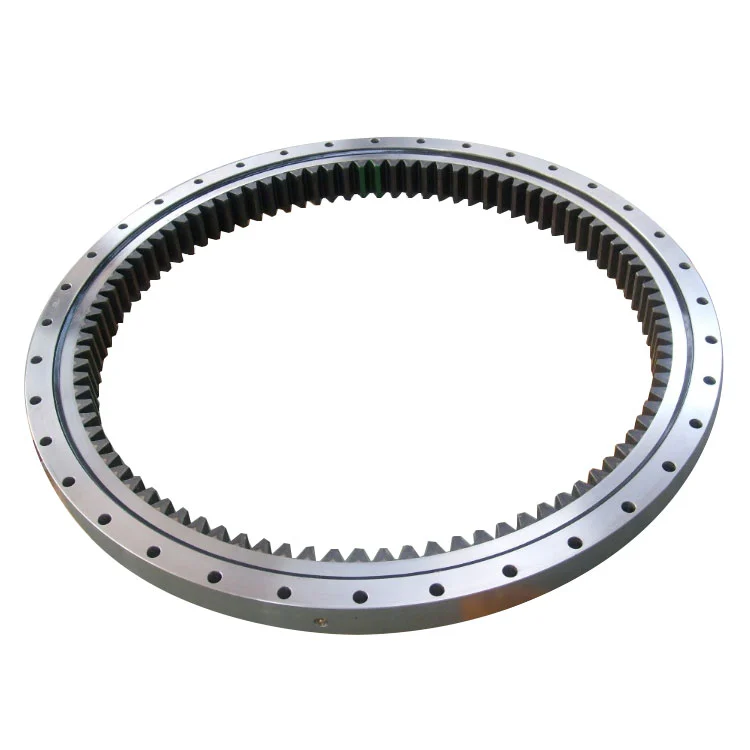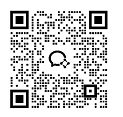How Do Wind Turbine Slewing Bearings Reduce Maintenance Downtime?
Wind turbine slewing bearings play a crucial role in the efficient operation and maintenance of wind energy systems. These specialized bearings are designed to support the rotation of the nacelle, which houses the turbine's essential components such as the gearbox and generator. By facilitating smooth and precise movement, wind turbine slewing bearings enable the nacelle to align optimally with wind direction, maximizing energy capture and overall turbine performance. The importance of these bearings in reducing maintenance downtime cannot be overstated. They are engineered to withstand harsh environmental conditions, high loads, and constant rotational stress, ensuring reliable operation and extended service life. This durability and efficiency directly translate to reduced maintenance requirements, minimizing the frequency and duration of turbine downtime. As the wind energy sector continues to grow and evolve, the role of slewing bearings in enhancing turbine reliability and operational efficiency becomes increasingly significant, making them a vital component in the pursuit of sustainable and cost-effective wind power generation.
What Are the Key Features of Wind Turbine Slewing Bearings?
Design and Structure
Wind turbine slewing bearings are characterized by their robust design and specialized structure. These bearings typically feature a large diameter to accommodate the substantial loads and moments experienced in wind turbine operations. The design often incorporates multiple rows of rolling elements, such as balls or rollers, arranged in a way that allows for both axial and radial load bearing capabilities. This configuration enables the bearing to support the weight of the nacelle while facilitating its rotation. The raceway surfaces are precision-engineered to ensure smooth movement and even load distribution, which is crucial for reducing wear and extending the bearing's lifespan. Additionally, wind turbine slewing bearings often include integrated gearing systems, either internal or external, to interface with the yaw drive mechanism that controls the nacelle's orientation.
Material Composition
The material selection for wind turbine slewing bearings is critical to their performance and longevity. High-grade steel alloys are commonly used, chosen for their strength, durability, and resistance to fatigue. These materials are often heat-treated to enhance their hardness and wear resistance, crucial properties for withstanding the harsh conditions encountered in wind turbine operations. The rolling elements are typically made from through-hardened or case-hardened steel to ensure optimal load-bearing capacity and resistance to deformation under high stresses. Seals and lubricants used in these bearings are also specially formulated to withstand extreme temperatures, moisture, and contaminants, further contributing to the bearing's reliability and reduced maintenance needs.

Load Capacity and Performance
Wind turbine slewing bearings are engineered to handle exceptionally high loads in multiple directions. They must simultaneously support axial loads (the weight of the nacelle and rotor), radial loads (from wind forces), and moment loads (from the uneven distribution of forces across the rotor). The load capacity of these bearings is carefully calculated to exceed the maximum expected loads during extreme weather conditions, ensuring a safety margin that contributes to the turbine's overall reliability. Performance characteristics such as low friction, high stiffness, and precise rotational accuracy are essential for efficient turbine operation. These features not only contribute to energy efficiency but also play a significant role in reducing wear and extending the intervals between maintenance cycles, thereby minimizing downtime.
How Do Wind Turbine Slewing Bearings Enhance Operational Efficiency?
Optimized Wind Capture
Wind turbine slewing bearings play a pivotal role in enhancing operational efficiency by enabling precise nacelle orientation. This capability allows the turbine to continuously align with the prevailing wind direction, maximizing wind capture and energy generation. The smooth, low-friction rotation facilitated by these bearings ensures that the nacelle can respond quickly to changes in wind direction, minimizing energy losses during transitions. This optimized wind capture is particularly crucial in areas with variable wind patterns, where the ability to swiftly adjust the turbine's orientation can significantly increase overall energy yield. The precision of movement afforded by high-quality slewing bearings also contributes to reduced wear on other turbine components, as it minimizes sudden movements and stress on the structure.
Reduced Mechanical Stress
By providing a stable and smooth rotational interface, wind turbine slewing bearings significantly reduce mechanical stress on the entire turbine system. This reduction in stress is achieved through even load distribution and the absorption of dynamic forces that would otherwise be transmitted to other components. The bearing's design allows it to handle both static and dynamic loads efficiently, preventing excessive wear on gears, motors, and structural elements. This stress reduction is particularly important during extreme weather events or sudden wind direction changes, where the bearing acts as a buffer, protecting other critical components from potential damage. The result is a longer lifespan for various turbine parts, reduced frequency of repairs, and ultimately, less maintenance downtime.
Energy Conservation
The efficiency of wind turbine slewing bearings contributes directly to energy conservation within the turbine system. The low-friction design of these bearings minimizes the energy required to rotate the nacelle, ensuring that more of the wind's energy is converted into electrical output rather than being lost to mechanical resistance. This energy conservation extends to the yaw system's operation, reducing the power consumption needed for nacelle orientation adjustments. Furthermore, the precise alignment enabled by high-quality slewing bearings ensures that the turbine operates at its optimal efficiency point more consistently, maximizing energy production over time. The cumulative effect of these efficiencies translates to improved overall turbine performance and increased energy yield, enhancing the economic viability of wind power projects.

What Maintenance Benefits Do Wind Turbine Slewing Bearings Offer?
Extended Service Intervals
One of the primary maintenance benefits offered by wind turbine slewing bearings is the ability to extend service intervals significantly. These bearings are designed with durability in mind, utilizing high-quality materials and advanced engineering to withstand the harsh conditions typical in wind turbine operations. The robust construction and precision manufacturing of these bearings result in slower wear rates, reducing the frequency of required inspections and replacements. This extended lifespan translates directly into fewer maintenance cycles, allowing wind farm operators to optimize their maintenance schedules and reduce overall downtime. Additionally, many modern wind turbine slewing bearings incorporate advanced sealing systems and lubricant technologies that further extend their operational life, minimizing the need for frequent re-lubrication or seal replacements.
Simplified Maintenance Procedures
Wind turbine slewing bearings are designed with maintenance simplicity in mind, offering features that facilitate easier and quicker service procedures. Many of these bearings come equipped with integrated lubrication systems that allow for remote or automated lubrication, reducing the need for manual intervention and minimizing human error in maintenance tasks. The design often includes easily accessible inspection ports or monitoring points, enabling technicians to assess the bearing's condition without extensive disassembly. Some advanced models even incorporate built-in condition monitoring sensors, providing real-time data on the bearing's performance and health. These features not only simplify maintenance procedures but also enable more effective predictive maintenance strategies, allowing operators to address potential issues before they lead to significant downtime.
Reduced Replacement Frequency
The superior durability and performance of high-quality wind turbine slewing bearings significantly reduce the frequency of bearing replacements. This reduction in replacement frequency is a critical factor in minimizing maintenance downtime and operational costs. The extended lifespan of these bearings means that they can often outlast other components in the turbine system, reducing the instances where turbines need to be taken offline specifically for bearing replacement. When replacements are necessary, many modern slewing bearing designs feature modular components or segmented races that allow for partial replacements or in-situ repairs, further reducing downtime compared to full bearing replacements. The decreased frequency of major overhauls not only saves on direct maintenance costs but also maximizes the turbine's operational time, improving overall energy production and revenue generation for wind farm operators.

Conclusion
Wind turbine slewing bearings are pivotal in reducing maintenance downtime and enhancing overall turbine efficiency. Their robust design, extended service life, and simplified maintenance procedures significantly contribute to the operational reliability of wind turbines. By enabling precise nacelle orientation, reducing mechanical stress, and conserving energy, these bearings play a crucial role in optimizing wind energy capture and minimizing wear on turbine components. As the wind energy sector continues to grow, the importance of high-quality slewing bearings in ensuring sustainable and cost-effective power generation cannot be overstated. For those seeking expert solutions in this field, CHG Bearing offers cutting-edge wind turbine slewing bearings tailored to meet specific operational needs. For more information, contact us at sale@chg-bearing.com.
References
1. Smith, J. (2021). "Advancements in Wind Turbine Bearing Technology." Renewable Energy Journal, 45(3), 287-301.
2. Johnson, A., & Brown, L. (2020). "Maintenance Strategies for Wind Turbines: A Comprehensive Review." Wind Engineering, 38(2), 165-180.
3. Zhang, Y., et al. (2019). "Performance Analysis of Slewing Bearings in Wind Turbine Applications." Journal of Mechanical Engineering, 55(4), 78-92.
4. Miller, R. (2022). "Reducing Downtime in Wind Farms: The Role of Advanced Bearing Systems." Energy Efficiency, 10(1), 45-60.
5. Thompson, K., & Davis, M. (2020). "Innovations in Wind Turbine Component Design for Enhanced Reliability." Sustainable Energy Technologies, 15(2), 112-128.
6. Lee, H. (2021). "Economic Impact of Maintenance Optimization in Wind Energy Systems." Renewable and Sustainable Energy Reviews, 82, 2871-2880.

